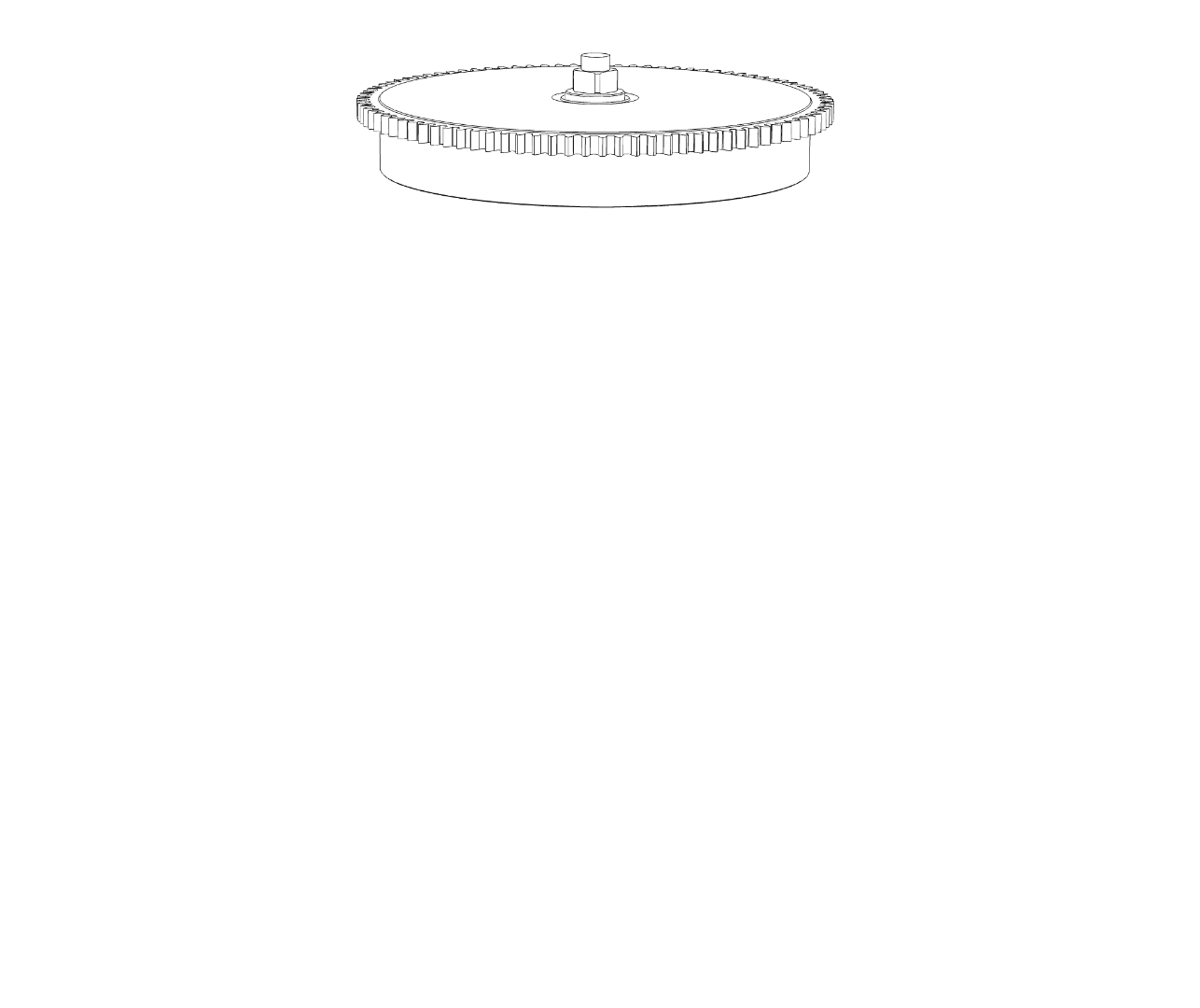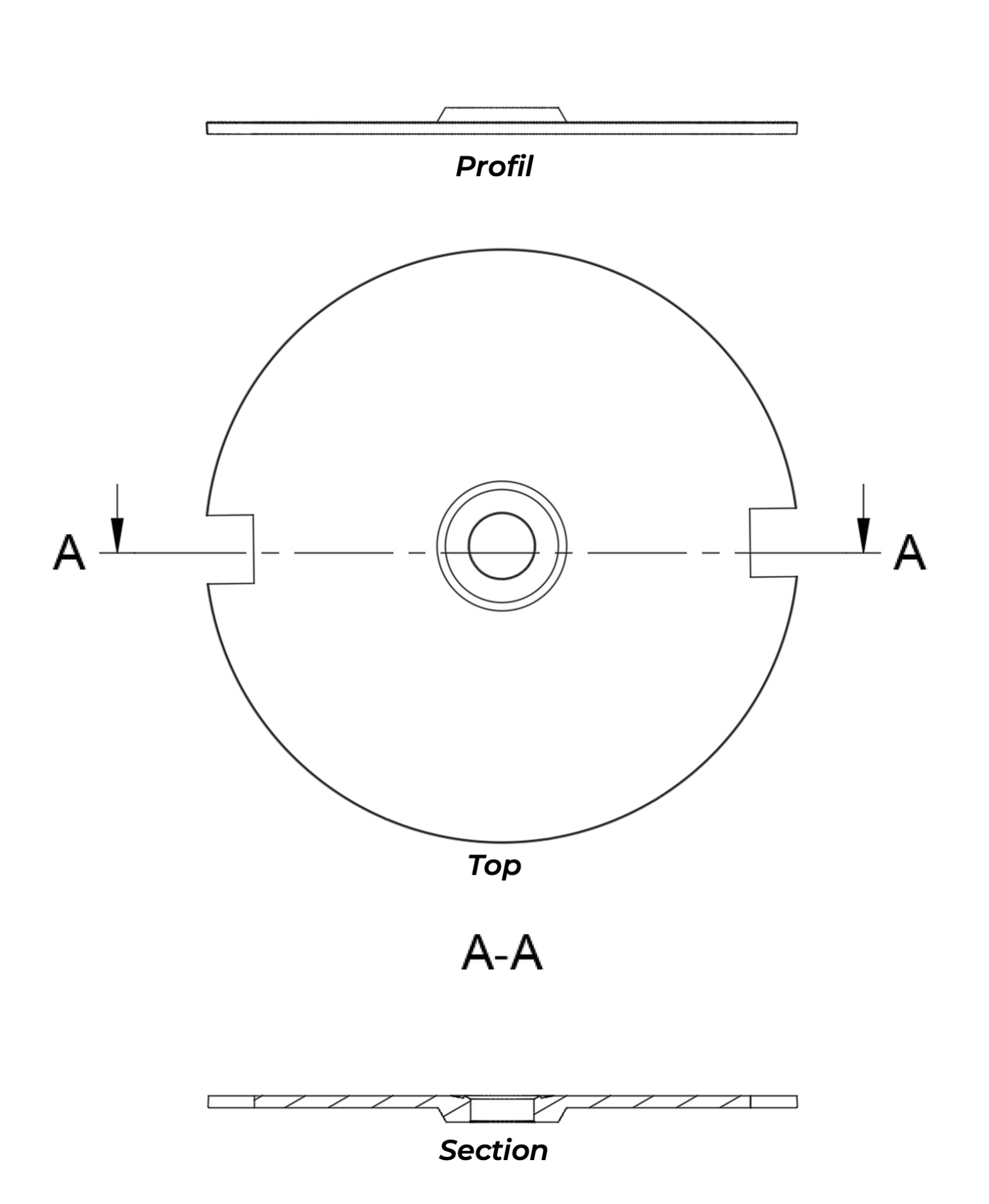DRUM COVER
Figure 1: Exploded view of a barrel (motor organ)
Figure 2: Plan of a barrel cover
It is one of the four components of the barrel, which itself is the driving organ of a mechanical watch. As its name suggests, the drum cover closes off the barrel drum by clipping onto it, protecting the mainspring from dust. The drum cover is made of the same material as the drum (either brass or nickel silver). In rare cases, such as in ultra-thin or skeletonised watches, the drum cover may be skeletonised or entirely omitted.


